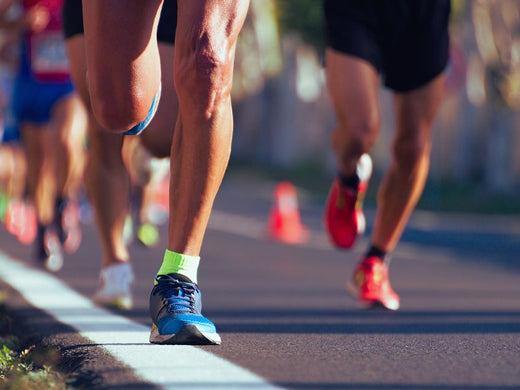It is time to race!
How to prepare for a running event
Even the most experienced runners in the world can be nervous leading up to an event. These handy hints can reduce your race day nerves so you can enjoy the experience. The following tips will help you, whether you are running a full or half marathon, 5km, 10km or walking 3km.
Training and preparation is key
Most programs, whether they be generic or custom, offer a structured program of 10-16 weeks that incrementally increases the distance and time spent running. The objective of the training program is to acclimatise your body to the increased running to reduce the risk of injury that can be bought on by doing too much too soon
Get the right type of shoes for YOU!
Do your research prior to the event.
Having a clear idea of where to go, what to do and the proceedings of the event can put your mind at ease. Remember there will be a lot of people and activities on race day, so make sure you do your research about the event and the actual race day weeks in advance.
• The race course and its surface type i.e. Is it on a compact surface or off road?
• Travel time and distance to the event
• Parking at or near the event
• Public transport options to and from the event
• Bag drops and/or locker options for your gear
• Historical weather forecasts to help plan your clothing for before, during and after the race
Have fun.
With so many choices out there, choosing the right running shoe can be a daunting task. We’re here to help you navigate through what everything means and help you find the perfect running shoe. When it coming to running footwear, it’s important to remember three simple things: Comfort, Function and Fit. We are all guilty of valuing things like colour, price and fashion more than how it fits and feels on our feet and how it functions for our individual biomechanics and desired activity. There is a time and place for fashion and desirability like there is a need to have the right shoe for the right activity requirements.
As a runner, we pound the pavement with approx. 5-7 times our body weight over and over with every stride. The value in finding the right running shoes is in providing your body with the cushioning and suitable stability needed to ensure you have enough support to endure and enjoy your training while working towards your goals leading up to your event.


Running Mechanics:
Pronation: Is the way your foot rolls inwards when you walk and run. It is described as the natural inward motion of the foot just after it lands on the ground. It is good and is essential for our bodies natural shock absorption system.
Over pronation: Is when the foot rolls in excessively or rolls in at a time when it should not. This will take the foot/leg out of its preferred position, destabilising the foot and effecting the biomechanical efficiency of the leg. Over pronators may benefit from a moderate stability shoe to improve the comfort and efficiency during their run.
Supination (or under pronation): Is when the foot doesn’t roll in much at all or rolls out. This movement can create lateral loading which can generate a large transmission of shock through the lower leg. Supinators do well with neutral well cushioned shoes that can absorb the impact of each stride.
Neutral: Is the position between supination and over pronation. It is the rolling in of the foot, enough to efficiently absorb shock and support body weight.
Types of Running shoes:
Neutral: Typically, a single density foam midsole intending to allow the foot to maintain its own natural motion while delivering a plush cushioning environment between the foot and ground.
Mild Stability: Highly cushioned platform traditionally made up of dual density foam used to deliver guidance, postural support for the foot and leg position through gait.
Moderate Stability: Highly cushioned platform traditionally made up of an increased amount of dual density foam used to deliver guidance, postural support for the foot and leg position through gait.

Lightweight/Race: These shoes can be a neutral or mild stability shoe with a reduced amount of foam and cushioning to create a lighter weight running shoe.
The key to finding the best fit for you is understanding your individual biomechanics and activity requirements. At Active Feet, we analyse your gait at a running/walking speed to ensure the prescription of the correct shoes with the cushioning and support you need to suit your biomechanical function and activity requirement. Active Feet are dedicated to encouraging participation, training and performance at all levels and distances. The right shoes can help you achieve your optimum performance, extend the life span of your shoes and help reduce your risk of injury. Visit us today.




How to prepare your shoes to race